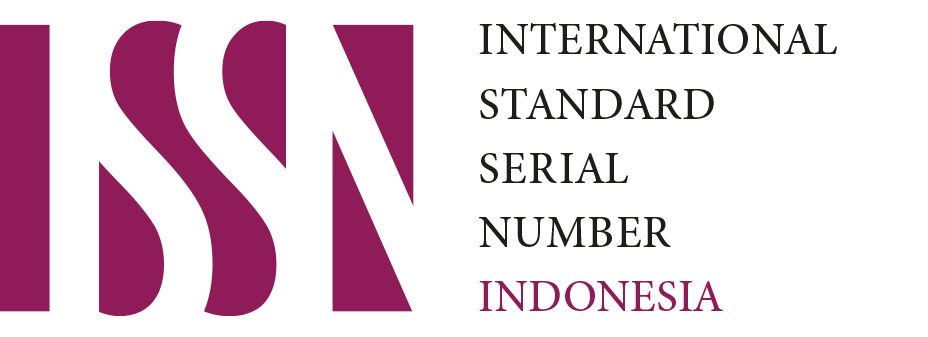Utilization of the Mobile Library Application via Smartphone
Downloads
Background of the study: The use of technology in an all-digital world has made the Lubuklinggau City Library and Archives Service innovate to create a mobile library named Ilubuklinggau.
Purpose: This study examines the use of the Ilubuklinggau mobile library application through a smartphone. This study aims to determine the use of existing collections in Ilubuklinggau by users, to find out the fulfillment of digital collection needs in the Ilubuklinggau application, and to know the skills of the community in accessing information through the Ilubuklinggau mobile library.
Method: The research method used is a qualitative approach. The research subjects were 6 people consisting of 3 users of the Ilubuklinggau application and 3 library staff, informants as data sources were taken with certain considerations.
Findings: Utilization is explained using the Unified Theory of Acceptance and Use of Technology (UTAUT) model parameters. Based on this research, it is concluded that the results of 4 aspects include: 1) aspects of performance expectations 2) business expectations 3) social influences 4) facilitation conditions. These four aspects must be possessed in order to make optimal use of the Ilubuklinggau mobile library application through smartphones.
Conclusion: The Ilubuklinggau application helps performance and makes it easier in terms of use, as well as increasing the competence and existence of the library, but this application has several obstacles that affect utilization such as incomplete collections due to budget conditions and face-to-face socialization that has not been held so that application enthusiasts are still lacking.
Downloads
Andi, J. (2015). Pembangunan Aplikasi Child Tracker Berbasis Assisted – Global Positioning System ( A-GPS ) Dengan Platform Android. Jurnal Ilmiah Komputer Dan Informatika (KOMPUTA), 1(1), 1–8. elib.unikom.ac.id/download.php?id=300375
Chandra, F. S., & Novita, D. (2020). Analisis Penerimaan Masyarakat Terhadap LayananTransportasi OnlineMenggunakan UTAUT (Unified Theory of Acceptance and Useof Technology). Jtsi, 1(1), 23–33.
Damayanti, A., Wijoyo, S. H., & Rusydi, A. N. (2020). Evaluasi Usability dan Perbaikan Desain Antarmuka Pengguna Aplikasi Mobile Library Perpustakaan Kota Malang menggunakan Metode Usability Testing. Jurnal Pengembangan Teknologi Informasi Dan Ilmu Komputer, 4(9), 3185–3192.
Dewi, A. O. P. (2019). Penggunaan Mobile Library untuk Perpustakaan Digital. Anuva: Jurnal Kajian Budaya, Perpustakaan, Dan Informasi, 3(2), 151–155. https://doi.org/10.14710/anuva.3.2.151-155
Fakhriah. (2019). Dampak Pemanfaatan UILIS Mobile Terhadap Pemenuhan Informasi Pengguna di UPT. Perpustakaan UNSYIAH. Fakultas Adab Dan Humaniora Universitas Islam Negeri AR-RANIRY, 5(564), 62
Fatmawati, E. (2012). Trend terkait M-Library untuk Perpustakaan Masa Depan. Visi Pustaka PERPUSNAS.
Fatmawati, E. (2017). Pemanfaatan Aplikasi Perpustakaan Digital iJATENG Melalui Smartphone. Profetik: Jurnal Komunikasi, 10(2), 46. https://doi.org/10.14421/pjk.v10i2.1336
Fauzan, S. A. (2018). Analisis Pemanfaatan Aplikasi Ipusnas Berbasis Android Di Perpustakaan Nasional Republik Indonesia. E-Journal UNDIP, II, 3. https://ejournal3.undip.ac.id/index.php/jip/article/download/22944/20981
Hardianto, H., & Zain, A. (2017). Perancangan Aplikasi Mobile Library Pada Perpustakaan Sekolah Tinggi Teknologi Bontang Berbasis Android. Politeknosains, XVI(2), 15.
Kemp, S. (2023). DIGITAL 2023: INDONESIA. Datareportal. https://datareportal.com/reports/digital-2023-indonesia
Nugroho, W. A., Rahmawati, R., Hanisah, L., Permatasari, D., & Dayu, K. (2022). Seminar Nasional Bahasa, Sastra, Seni, dan Pendidikan Dasar 2 (SENSASEDA) 2 STKIP PGRI BANJARMASIN Pemanfaatan Media Aplikasi Ipusnas Sebagai Sumber Belajar Dalam Meningkatkan Literasi Membaca Siswa SD. Seminar Nasional Bahasa, Sastra, Seni, Dan Pendidikan Dasar 2, 2(November), 13–18.
Palupi, A. S. (2012). Perpustakaan Kota di Yogyakarta. E-Jornal Uajy, 18–42.
Pendit, P. L. (2003). Penelitian Ilmu Perpustakaan dan Informasi. JIP-FSUI.
Purnomo, G. W. (2019). Pengujian UTAUT Model dalam Pemanfaatan Literasi Informasi Perpustakaan Perguruan Tinggi. Jurnal Ilmiah Administrasi Publik, 5(3), 277–284. https://doi.org/10.21776/ub.jiap.2019.005.03.3
Rijali, A. (2018). Analisis Data Kualitatif. Alhadharah: Jurnal Ilmu Dakwah, 17(33), 81. https://doi.org/10.18592/alhadharah.v17i33.2374
Rivai, M. B. (2014). Penerapan Model UTAUT Untuk Memahami Tingkat Penerimaan dan Penggunaan E-Learning (Be Smart) di Fakultas Teknik Universitas Negeri Yogyakarta. In Fakultas Teknik Universitas Negeri Yogyakarta.
Saravani, S. J., & Haddow, G. (2011). The Mobile Library and Staff Preparedness: Exploring Staff Competencies Using the Unified Theory of Acceptance and Use of Technology Model. Australian Academic and Research Libraries, 42(3), 179–190. https://doi.org/10.1080/00048623.2011.10722231
Venkatesh, V. (2003). User Acceptance Of Information Technology Toward A Unified View1 By: Mis Quarterly, 27(3), 425. https://doi.org/10.1006/mvre.1994.1019
Website Ilubuklinggau. (2017). Website Ilubuklinggau Dinas Perpustakaan Dan Kearsipan Kota Lubuklinggau. http://ilubuklinggau.moco.co.id/
Copyright (c) 2023 Adzkiyah Mubarokah, Heni Nopianti, Fransiska Timoria Samosir

This work is licensed under a Creative Commons Attribution-ShareAlike 4.0 International License.
Record and Library Journal by Unair is licensed under a Creative Commons Attribution-ShareAlike 4.0 International License.
1. The journal allows the author to hold the copyright of the article without restrictions.
2. The journal allows the author(s) to retain publishing rights without restrictions
3. The legal formal aspect of journal publication accessibility refers to Creative Commons Attribution Share-Alike (CC BY-SA).
4. The Creative Commons Attribution Share-Alike (CC BY-SA) license allows re-distribution and re-use of a licensed work on the conditions that the creator is appropriately credited and that any derivative work is made available under "the same, similar or a compatible license”. Other than the conditions mentioned above, the editorial board is not responsible for copyright violation.


 57201398420
57201398420

























